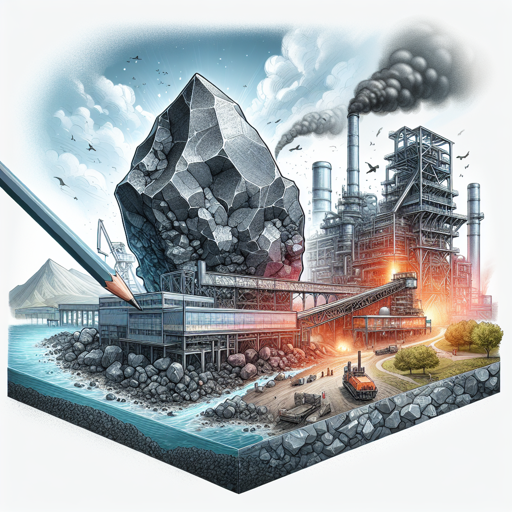The Essential Role of Manganese in Steel Making
Unveiling the significance of Manganese in enhancing the strength and durability of steel.

Introduction
Manganese, a crucial mineral in the steel industry, has been shaping our civilization for centuries. Its significant role in steel-making is often overlooked, overshadowed by the more famous iron. This article aims to shine a light on this unsung hero of the metallurgical world, exploring its contributions to the strength and durability of steel.
Manganese and Its Unique Properties
Manganese is the twelfth most abundant element on earth’s crust and is identified for its unique properties. It is a transition metal with a silvery-white appearance and is often found in combination with iron in nature.
Manganese is known for its strong resistance to wear and its exceptional hardening characteristics. These properties, combined with its relative abundance and low cost, make it an essential component in steel production.
The Role of Manganese in Steel Making
Manganese plays a multifaceted role in the process of steel making. It serves as a deoxidizer, desulfurizer, and alloying element, enhancing the steel’s overall quality and performance.
As a Deoxidizer
During the steel production process, oxygen is one of the most harmful impurities, as it can cause brittleness. Manganese acts as a potent deoxidizer, reacting with the oxygen to form manganese oxide. This oxide then floats to the top of the molten steel and is easily removed, thus preventing the oxygen from causing damage.
As a Desulfurizer
Sulfur is another damaging impurity in steel, leading to the formation of iron sulfide, which can cause the steel to crack. Manganese, combined with iron, forms a stable compound with sulfur, known as manganese sulfide. This compound floats to the top of the molten steel and can be easily removed, thus eliminating the harmful effects of sulfur.
As an Alloying Element
Manganese is also used as an alloying element to enhance certain properties of steel. It increases the steel’s strength, hardness, and resistance to wear, while also improving its ability to withstand high temperatures without losing its shape.
To illustrate the effect of manganese on steel’s properties, let’s take a look at the following table:
| Steel Type | Manganese Content (%) | Tensile Strength (MPa) | Hardness (HB) |
|---|---|---|---|
| Low Carbon Steel | 0.25 | 370 | 130 |
| Medium Carbon Steel | 1.25 | 800 | 200 |
| High Manganese Steel | 13 | 1000 | 250 |
As the table indicates, as the manganese content in the steel increases, so does its tensile strength and hardness.
“Manganese is the magic element for steel. It turns the brittle iron into a durable, workable steel, capable of bearing the immense stress and strain of our modern structures.” - Unknown
External Reference
For more detailed insights into the role of manganese in steel making, you can refer to this research paper from the International Journal of Minerals, Metallurgy, and Materials.
Conclusion
Manganese is the unsung hero in the world of steel making. Its role as a deoxidizer, desulfurizer, and alloying element is critical in enhancing the strength and durability of steel. With its unique properties and cost-effective availability, manganese will continue to be an essential component in our infrastructure and our lives. As we delve deeper into the world of metallurgy, the role of such elements becomes increasingly significant in our quest for stronger, more durable materials.